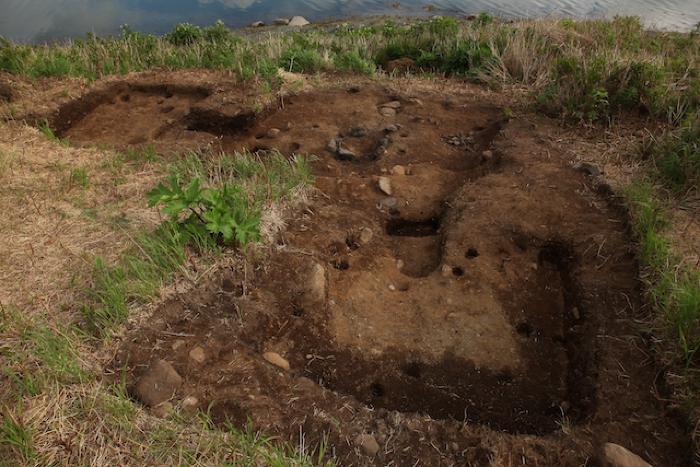Floor — Nateq

Traditional Alutiiq houses had earthen floors. Dug into the soft volcanic soils of Kodiak Island, these floors had many features. In the center of most was a stone-ringed hearth that provided light, heat, and a place to cook. Clay-lined pits for holding water and food surrounded some hearths. Large roasting pits, where meat was buried with hot rocks to bake, flanked others. Other houses had subfloor storage pits. Lined with grass, these pits kept foods cool but unfrozen throughout the winter season. Some houses were also equipped with drainage ditches: board-covered trenches dug into the floor that helped to channel rainwater away from living areas.
Elders recall that dirt floors had to be carefully maintained throughout the year. Floors were swept with brooms made of eagle wings and covered with thick layers of clean, dry grass. In fall and spring and before important festivals, people cut fresh dry grass from the hillside to cover their floors. In sleeping areas, this grass might be covered with bear or otter hides to create warm, soft bedding.
In winter, household floors became a stage for festivals—the place where community members gathered to dance, sing, and communicate with the spirit world. Stories of these festivals, recorded in the nineteenth century, tell of spirits so frightening that the grass on the floor retreated in fear.
